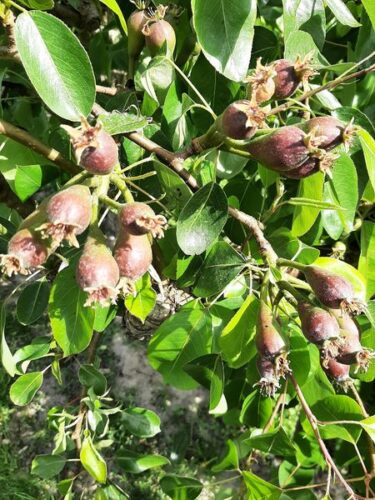Fruiting follows in the spring after the flowering of fruit trees. As a rule, there is an excess of small fruits. Many fruits fall off between the end of May and mid-June: the June drop . This is a natural process in which the tree rejects all weak fruits.
The fall of the fruits at the end of May/beginning of June – the June drop – is also due to:
- It was too cold during flowering, so the blossom was insufficiently pollinated
- Poor pollination due to lack of bees and other pollinators
- Abundant rain
- Nutritional deficiency
After the June drop it is wise to check fruit trees for ‘weak’ fruits (apples and pears). This applies to apple, pear and plum trees. With walnuts, thinning and checking is not necessary. Remove the apples and pears that are misshapen, affected (mold) or damaged (hail). Also cut away the fruits that are in the way of other fruits.
Thinning prevents branch breakage. Particularly in plum trees, whose branches are less firm than those of apple and pear, thinning is necessary to ensure that the branches cannot bear the weight of the ever-growing plums.
Thinning can be done with scissors or small secateurs:
- Cut out misshapen, diseased and damaged fruits
- When there are three or more fruits in a truss, remove the middle one
- Cut away fruits at the branch end, as they can cause branch breakage
- Fruits that hang under branches in the shade receive less sun and therefore have less color and taste. Cut these away.
The best time for thinning is late June.

